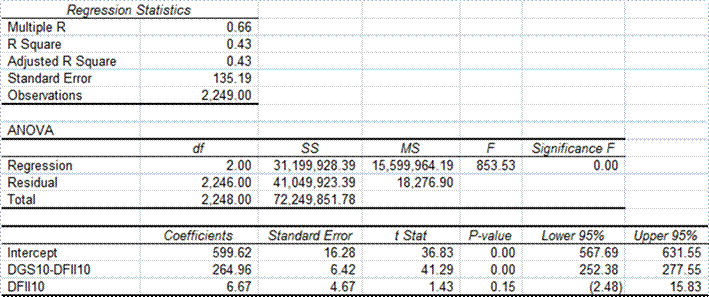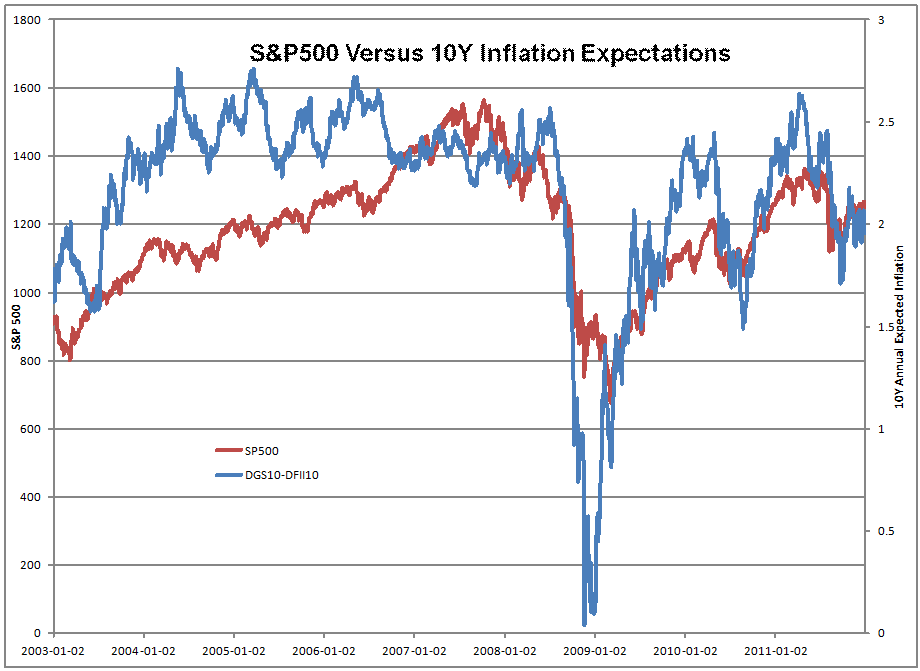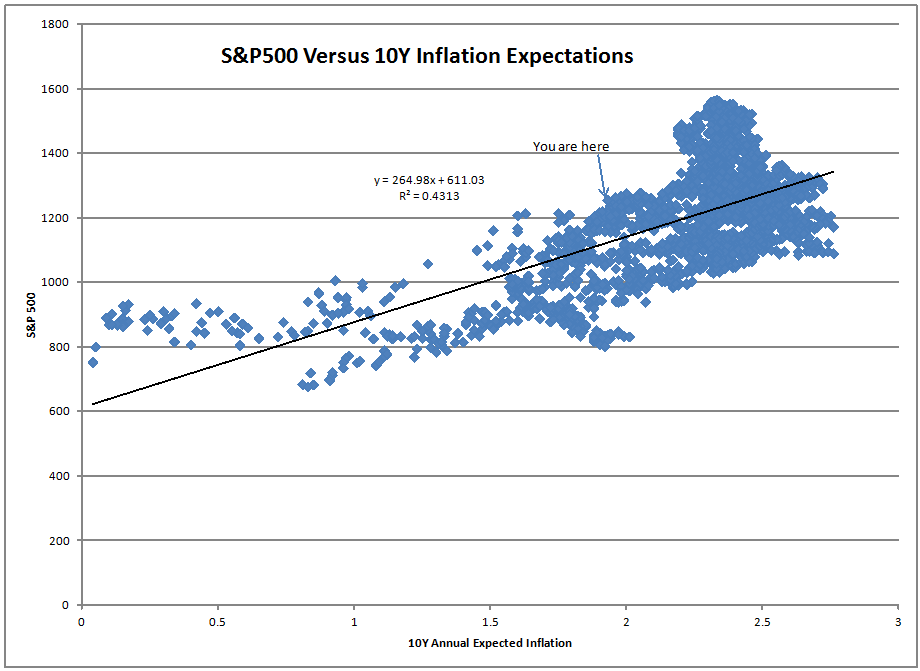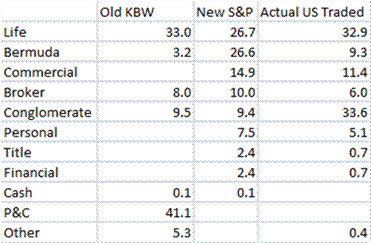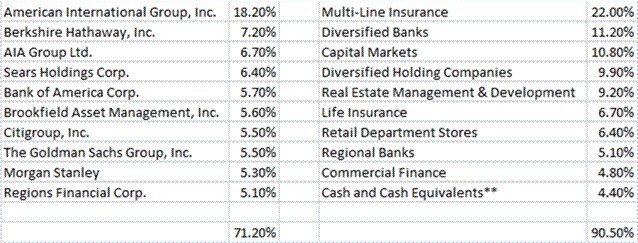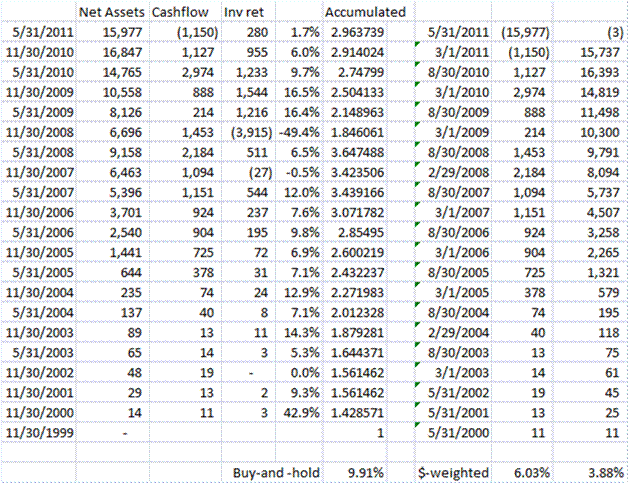My wife has only given me financial advice twice in my life.? She was totally right both times.? Now, she doesn’t have a financial bone in her body.? She was raised in a household where she never lacked anything, with non-materialistic parents where the father earned a lot as a nuclear physicist.? She was a princess,never having to worry, and married a prince, me, where she never had to worry.
As an aside, the father recently died, and he was quite a guy, but humble.? If you ever get therapy in a hospital that requires a cyclotron or any delivery device that allows positrons or any anti-particle to be used in surgery, my father-in-law was the brains behind it.? He was an amazing man, and though my wife is astounding, one benefit of marrying her was getting to know her father, who was an amazing man.? (Did I tell you he was amazing? 😉 )
Anyway, the first time my wife gave me investment advice was when I worked for the St. Paul.? My boss invited me to his officein early 2000, and handed me an envelope.? He said, “This is your bonus, invest it wisely.”? At that point in time, St. Paul was in the tank, and no one liked it much at all.? I took the wad, and put it all on The Saint Paul.? (My wife was amazed at the size of the bonus, but the bonus was given for keeping the company safe, not for making a ton.)
Eventually, it leaked out that I had invested so much in the parent company.? Members of my investment team told me I was a dope, and that the St. Paul was a lousy company to invest in. One told me, “No that’s not value investing, value investing requires a catalyst, and there is no catalyst here.”? (Note: catalysts do not always appear, and they can be expensive.)
Me, a value investor thought that buying a company at 55% of liquidation value, and a single digit multiple of forward earnings would do fine.? After one month, several P&C insurance CEOs announced that they were seeing pricing power, and the stock of the St. Paul rose 30%.? I could not sell, because I was constructively an insider, though I had no insider information.
After another 3 months, the cycle was in full swing, and the St. Paul’s common stock was up 80% from where I bought it.? At that point, my wife came to me and said, “You’ve been talking a lot about the St. Paul over the last few weeks, how important is it to our family?”? I told her, “It is half of our net worth.”? She said, echoing things she had heard me say previously, “Shouldn’t you take something off the table?”? I told her that I would.? I liquidated the whole position at my first opportunity, given my restrictions.? My gain was 95%, over six months.
As it was, after I did this, that many people at the St. Paul came to me saying, “You sly dog, you are a genius, but now we are doing it too; we are in this with you.”? I told them, “Aack, no.? Don’t do this.? You are buying? the top.”? And, wrong again, the price rose for a few more months, only to fall dramatically.
-==-=–=-=-==-=-=-=–=–==–=-=-=-=-=-=-=-=-==-=-=-=–
A few years later, my wife said to me, “You keep talking about Wright Manufacturing, and how well it is doing, but how much do we own of the company?? I said, “You see our house?”
She said, “Of course.”
I said “Well, our holdings are worth a little more than our house.”
Beyond her ordinary ability, she asked, “Okay, David, but would you invest in this company to the degree that you have if it were publicly traded?”
I told her “No.”
She then asked, “then why don’t you take something off the table?”
I was cut to the heart, and I told her I would do so.? I sold half of my shares to the second largest shareholder.He told me that he would meet me at my office at Hovde.? After he got there he was amazed at me and said, “Wait, you are a smart guy, what am I missing here?”? I told him that I needed the money for the college educations of my children, so I needed more liquidity.
That mollified him, and allowed me to sell before the price cratered in 2008-9, as the company nearly failed.
But that’s another story, one where I bought amid distress, but not enough….
-==–=-=-==–=-=-=-==–=-=-==-=-=-=-=–==–==-=–=-=-==-=-=–=-=-==-
I love my wife.? We just celebrated our silver (25th) anniversary.? She is wonderful in so many ways that I cannot describe here, and her children (and mine), biological and adopted would agree.
Though a princess, she absorbed enough of my ideas to counsel me at two particularly important turning points for the good of our home.? With the St. Paul, I probably would have done the right thing but with Wright Manufacturing, probably not.
So I praise her here for absorbing my wisdom, and applying it to me, when I could not do so myself.
–==–=-==-=–=-==–=-=-==-=-=-=–=-==-=-=-=-=-=-=–==-=-=-=-=-=–==-=-=-
To bright people in finance I would say pay attention to those near you who don’t have your acumen, if they have been around you long enough.? They may give you cues that you could not ordinarily get, and it might just save your hide.
For me, this gives me an opportunity to praise the second most important person in my life, my wife, who typically has no impact on financial decisions, but at a few critical points did very well for me and the family.? She learned from me.
As for the one most important, that would be Jesus Christ, who many imagine they are honoring at this time of year, even though he never asked that his nativity be celebrated.? Just saying.



